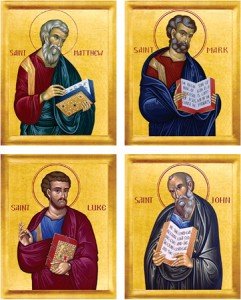 Before Pascha, I had been sharing some information about the various theories that address the Synoptic Problem, namely why there are very specific differences and similarities in the three Synoptic Gospels (i.e., Mark, Matthew and Luke). I would now like to summarize these theories. This will make sense if you have been reading past issues of the article.
Before Pascha, I had been sharing some information about the various theories that address the Synoptic Problem, namely why there are very specific differences and similarities in the three Synoptic Gospels (i.e., Mark, Matthew and Luke). I would now like to summarize these theories. This will make sense if you have been reading past issues of the article.
(1) ORAL TRADITION
Must truly be given a more prominent place in the consideration of any solution to the Synoptic Problem. Oral tradition alone is not the answer; it alone cannot explain the similarities in the written texts.
(2) MARK AS THE SOURCE
Mark as a source of both Matthew and Luke is generally accepted by Protestants and Catholics as the sequence of the Gospels. There is a literary dependence of Matthew and Luke, therefore, on Mark. And Mark is to be regarded as the oldest of our Gospels in Greek.
(3) MATTHEW AS THE SOURCE
The canonical Matthew was very probably composed in Greek and is not a direct translation of an Aram original.
(4) SOURCES “Q” and “S”
It should be remembered that sources “Q” (in Greek) and “S” (in Aram) are pure conjectures. Moreover, to presume that either “Q” or “S” is Aram “M” or “Mg” is purely arbitrary.
(5) LITERARY SOLUTION
Any purely literary solution with no consideration for oral tradition does not present the picture adequately.
(6) MULTIPLE DOCUMENT THEORY
Perhaps the nearest approximation to the truth will be found in a multiple-document theory that takes into account a continuing oral tradition and its influence until the final crystallization of our present canonical Gospels.
CONCLUSION
All the time and effort put into the consideration of the Synoptic Problem over the past century and a half have not been in vain. For each attempt at a solution, though faulty in some area, has contributed some insight. With each new insight we are brought closer to the complete answer. Yet the origins of the Synoptics, going back as many centuries as they do, are difficult to perceive. We are still a long way from a completely satisfactory answer. Perhaps the problem will never be totally solved. The challenge, however, still remains and will continue to be accepted by dedicated scholars. So a simple interpretation of the Gospels is not in our best interest. We must think about the message that they are attempting to convey!
